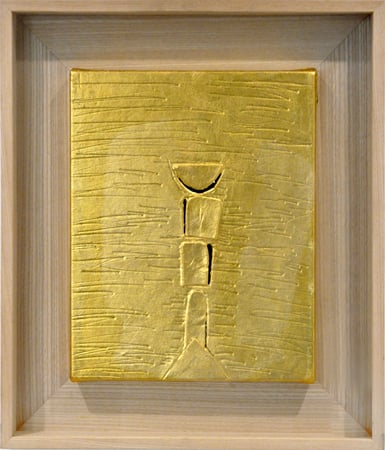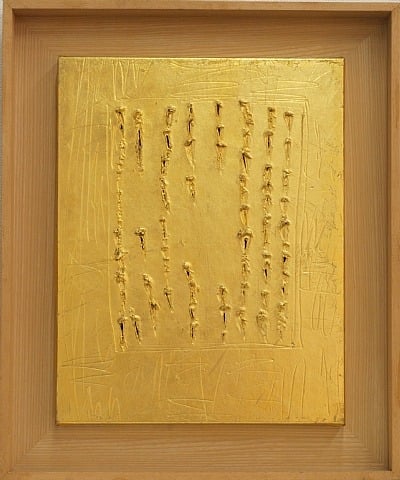Galleries
Nobuo Sekine and the Japanese Mono-ha Movement
US collectors are embracing Nobuo Sekine and the Mono-ha movement.

US collectors are embracing Nobuo Sekine and the Mono-ha movement.

Heather Russell


Nobu Sekine, Tower, 1987, 11 x 8.7 x 1.12 in., sold on artnet Auctions for US$6,544 Premium on February 22, 2013
Nobuo Sekine (Japanese, b.1942), one of Japan’s most important Contemporary artists, has quietly gained notoriety for the singular manner in which he explores Japanese post-war culture in the context of his artwork. The artist is one of the founders of the “Mono-ha” (School of Things) movement, a group of artists who set themselves apart from mainstream Contemporary Art. Mono-ha artists often employed raw materials such as stone, wood, paper, fabric, sand, and iron plates. They incorporated the natural world into their work, including fabricated elements seen in Primary Structures and various kinds of Kinetic and Op objects of the same period. Influences in Sekine’s artwork span from traditional Japanese arts and culture to artists of the European “Arte Povera” movement, notably Caio Fonseca and Jannis Kounellis. The artist’s oeuvre has been well-known for decades in both Asia and Europe; his large-scale earth work, Phase of Nothingness, was shown at the Venice Biennale in 1970 to critical acclaim. His art is now being embraced in the United States, thanks in part to his participation in several critically acclaimed museum and gallery exhibitions.

Nobuo Sekine, From the Point G6-77, 16.1 x 12.2 in., Gallery Tezukayama, Osaka, Japan
Sekine’s work was included in this year’s highly commended exhibition entitled Tokyo 1955-1970: A New Avant-Garde, which ran from November 18, 2012 to February 25, 2013, at the Museum of Modern Art in New York, NY. In addition, several of his large-scale sculptures and installations were featured in the major 2012 traveling exhibition, Requiem for the Sun: The Art of Mono-Ha, which was curated by Mika Yoshitake, assistant curator at the Hirshhorn Museum in Washington, D.C. The show was originally exhibited at Blum & Poe in Los Angeles, CA, from February 25 to April 12, 2012, and then at Gladstone Gallery in New York from June 22 to August 3, 2012. These exhibitions included other notable artists of the Mono-ha movement, such as Koji Enokura (1942–1995), Susumu Koshimizu (b.1944), Kishio Suga (b.1944), Jiro Takamatsu (1936–1998), Noboru Takayama (b.1944), Lee Ufan (b.1936), and Katsuro Yoshida (1943–1999).
2011 and 2012 saw a series of other important museum and gallery shows for Sekine, including Rachofsky House: New Exhibition Space in Dallas, TX, and Ends of the Earth: Land Art to 1974, at the Museum of Contemporary Art in Los Angeles, CA. His work was also exhibited in the important 2005 exhibition, MONO-HA: Reconsideration, at The National Museum of Art in Osaka, Japan, and in Century, at Tate Modern Art Gallery in London, U.K., in 2011. Sekine received his fine arts degree from Tama Fine Art College in Tokyo, Japan, in 1968. The artist currently lives and works in Japan.

Nobue Sekine, Phase-Sponger, 1968–2012, 51.88 x 47.25 x 47.25 in., Gladstone Gallery, New York, NY